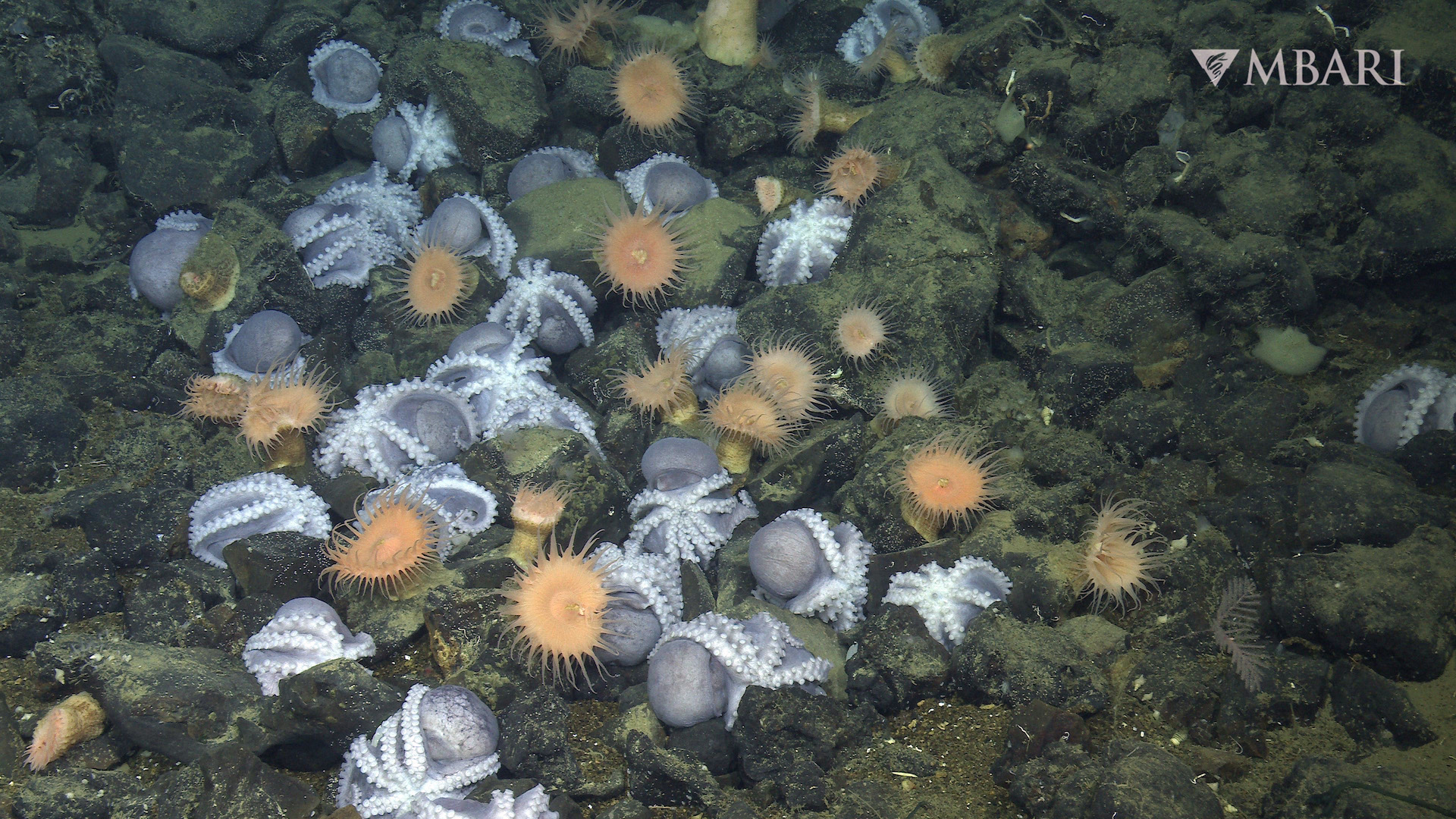Researchers discover deep-sea springs fuel octopus breeding grounds
Jeff Richardson
907-474-5350
Aug. 23, 2023

An aggregation of female pearl octopus (Muusoctopus robustus) nesting at the Octopus Garden, located near Davidson Seamount off the central California coast.
Deep-sea hydrothermal springs are dramatically enhancing the reproductive success of octopuses at a site off the central California coast, contributing to the largest known aggregation of the marine creatures in the world.
In a study published in Science Advances, a team from multiple institutions, including the University of Alaska Fairbanks, described how deep-sea pearl octopuses migrate to a site dubbed the Octopus Garden to mate and nest. Researchers spent the past three years using high-tech tools to observe the site, which could host more than 20,000 Muusoctopus robustus. Researchers nicknamed the species the pearl octopus because its nests look like pearls on the seafloor.
The Monterey Bay Aquarium Research Institute led the study. In addition to UAF, the National Oceanic and Atmospheric Administration's Monterey Bay National Marine Sanctuary, Moss Landing Marine Laboratories, the University of New Hampshire and the Field Museum also participated.
The Octopus Garden is located about two miles below the ocean's surface on a small hill near the base of Davidson Seamount, an extinct underwater volcano 80 miles southwest of Monterey, California. The ambient water temperature at that depth is about 35 degrees Fahrenheit. However, the water temperature within the cracks and crevices at the Octopus Garden reaches about 51 F.
Most deep-sea octopuses have much longer incubation periods than their relatives inhabiting warmer shallow seas, but the waters around thermal springs speed up the metabolism of female pearl octopuses and their offspring.
“Very long brooding periods increase the likelihood that a mother’s eggs won’t survive,” said Jim Barry, a senior scientist at MBARI and lead author of the paper. “By nesting at hydrothermal springs, octopus moms give their offspring a leg up.”
Geoff Wheat, a research professor at the UAF College of Fisheries and Ocean Sciences, said the connection between deep-sea thermal springs and enhanced breeding activity could be significant. Three of the world’s four closely studied low-temperature hydrothermal sites have octopus nursing grounds.
“There’s got to be thousands or even millions of these sites along the seafloor,” said Wheat, an expert in geochemistry who contributed to the study. “What else are we going to find that we don’t know about today? Are we going to find other organisms that we had no clue had such a footprint in the deep-sea ocean?”
Similar geothermal conditions could exist in the underground oceans and crusts beneath them on other planets or moons, creating an environment that could potentially support life, Wheat said.
“There’s still going to be a zone on Mars or Europa where water is still in a liquid form because of geothermal activity,” he said. “There’s a lot that we don’t know about the effects of fluid flow below the ocean crust, especially in the sense of microbial activity and microbial communities.”
The full news release about the Octopus Garden paper is available at the MBARI website.
ADDITIONAL CONTACTS: Geoff Wheat, cgwheat@alaska.edu; Raúl Nava, MBARI, pressroom@mbari.org
026-24


